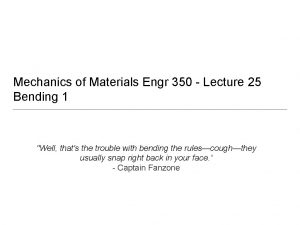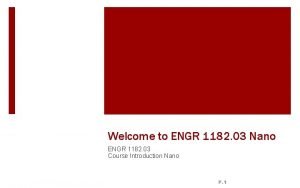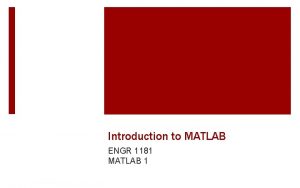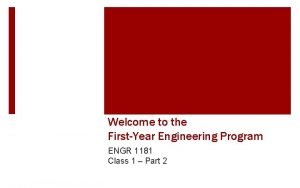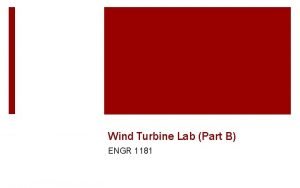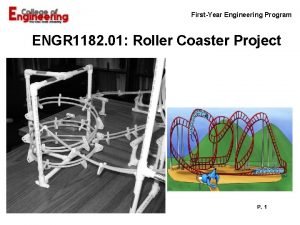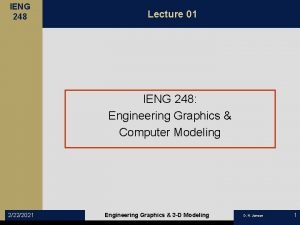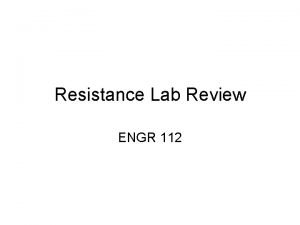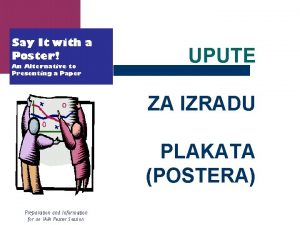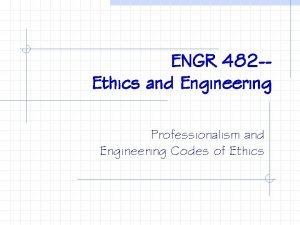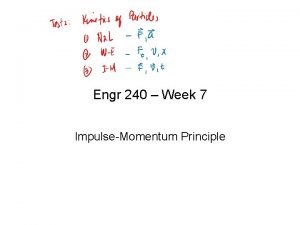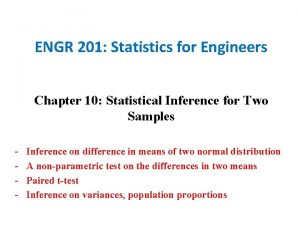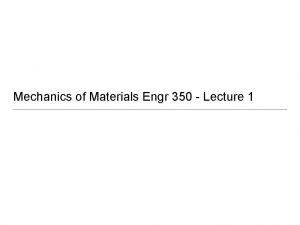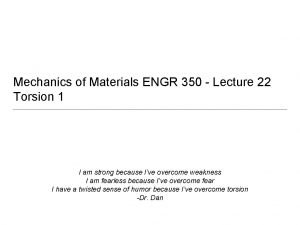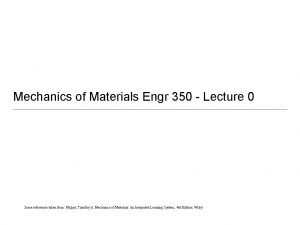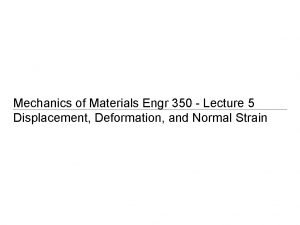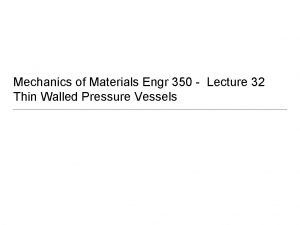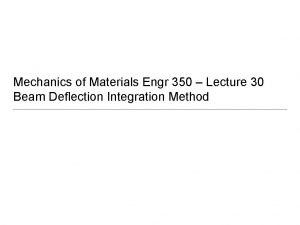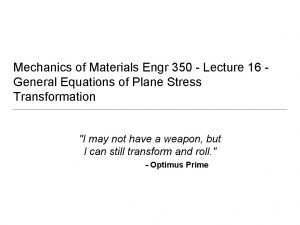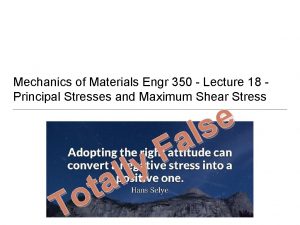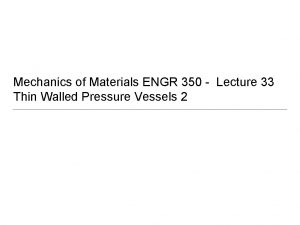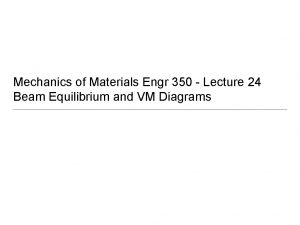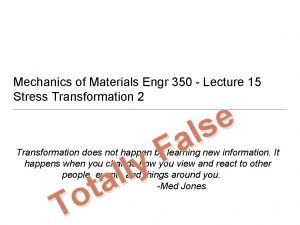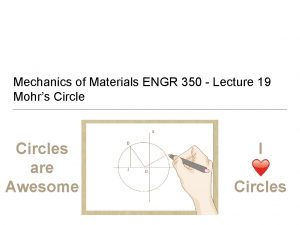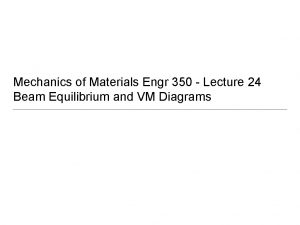Mechanics of Materials Engr 350 Lecture 28 Q
















- Slides: 16

Mechanics of Materials Engr 350 – Lecture 28 Q and rectangular/circular cross-sections

What is Q? • 2

Practice Problem 1 V=3000 lbf K • 3

Practice Problem 1. 5 V=3000 lbf K • 4

Transverse Shear Rectangular Beams • From the transverse shear stress formula • At an arbitrary point y, Q is • So the transverse (or horizontal) shear stress is 5

Maximum Transverse Shear • The maximum transverse shear occurs at the middle of the beam (y=0). Substituting y=0 into the shear stress formula for rectangular beams yields. • A fine point regarding the shear stress: Remember our derivation of shear on perpendicular faces of an element being equal? The same shear stress exists on the transverse and longitudinal planes. We could calculate the average shear stress on a face using the shear force V and the area, but our derivation above shows that the maximum is 50% larger than the average. • 6

Maximum vs Average Shear • 7

Practice Problem 2 V=3000 lb K Solve for the maximum shear stress on the cross-section and determine the y-coordinate where it occurs 8

Transverse Shear Circular Beams • By a similar procedure (see section 9. 6) to that for rectangular beams, we find that for circular beams, Q at the neutral axis is: • and the maximum shear stress is (again at y=0) 9

1. 2 kip/ft Practice Problem 3 14 ft Determine the magnitude of maximum shear stress at the glue joint H, and where (x-position) along the beam this occurs. V M 10

Q for Complexer Geometry • Q is the area “above” the point of interest multiplied by the distance between the centroid of this area and the neutral axis of the beam • For composite sections we can add the Q for each “piece” of the area 2 �� L 1 11

T 4” Practice Problem 4 • Determine Q and t for the points H and K. H K z 8” 7” 6” 1” 12

Practice Problem 5 A cantilever beam is subjected to a concentrated load of 2, 000 N. The cross-sectional dimensions of the double-tee shape are shown. Determine (a) the shear stress at point H, which is located 17 mm below the centroid of the double-tee shape. (b) the shear stress at point K, which is located 5 mm above the centroid of the double-tee shape. 13

PP 5 14

Practice Problem 6 • G Identify Q and t at the points G and H 15

Shear stress distribution • • Draw the shear stress distribution for the following beams Learn to do this in MM M 9. 5 L 16
